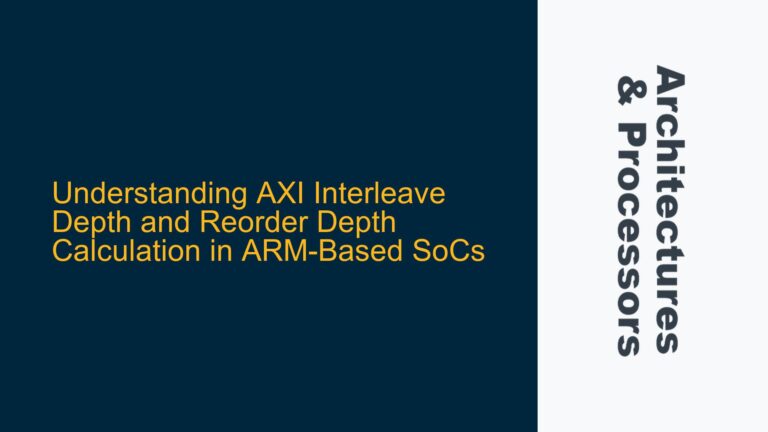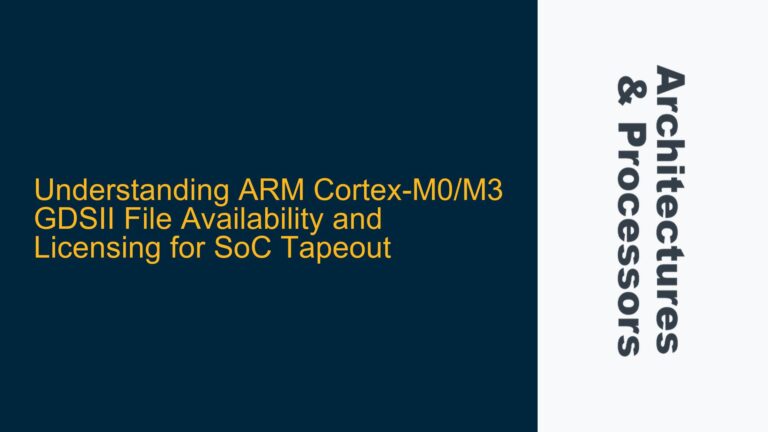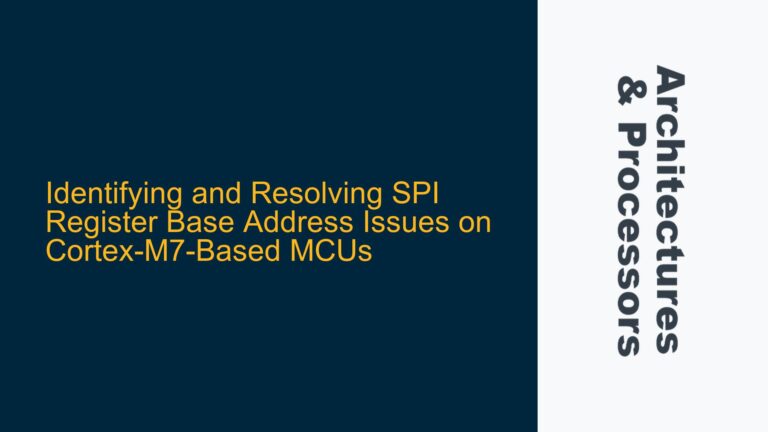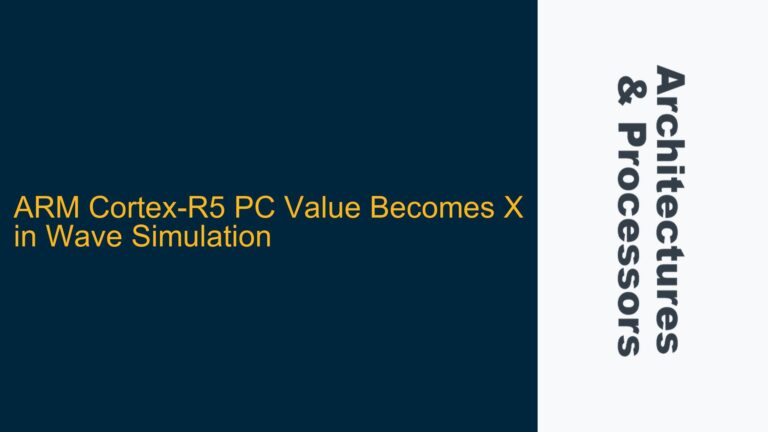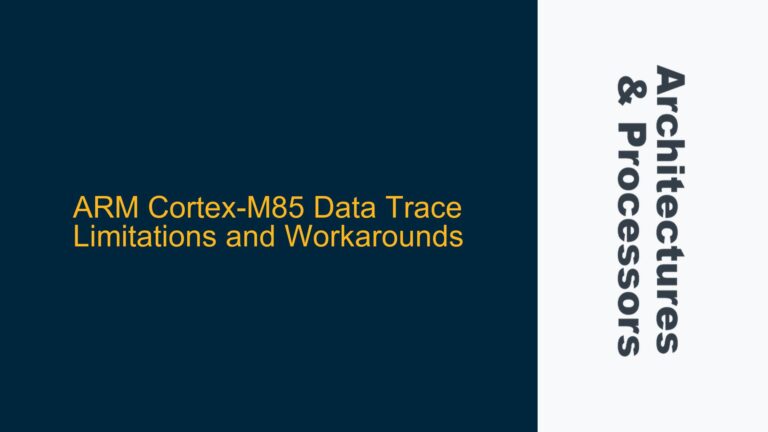ARM Cortex-A510 Dual-Core Complex VPU Sharing Mechanism
The ARM Cortex-A510 processor, part of ARM’s latest generation of high-efficiency cores, introduces a dual-core complex architecture where two cores share a Vector Processing Unit (VPU). This design choice is aimed at optimizing silicon area and power efficiency, particularly in scenarios where both cores may not require simultaneous VPU access. However, this shared resource architecture raises critical questions about how access conflicts are managed and whether software needs to explicitly handle VPU access synchronization.
In the Cortex-A510 Technical Reference Manual (TRM), ARM specifies that the VPU is shared between the two cores within a dual-core complex. This means that both cores can issue vector instructions, but the VPU hardware must manage access to ensure correct execution. The VPU is a critical component for accelerating tasks such as machine learning inference, digital signal processing, and multimedia workloads, making its efficient utilization paramount.
The sharing mechanism is designed to be largely transparent to software, meaning that developers do not need to explicitly manage VPU access in most cases. However, understanding the underlying hardware behavior is essential for optimizing performance and avoiding subtle bugs. The VPU sharing mechanism relies on hardware arbitration to manage access conflicts, but certain scenarios may still require software intervention to ensure correct behavior.
VPU Access Conflict Scenarios and Hardware Arbitration
When two cores in a Cortex-A510 dual-core complex attempt to use the VPU simultaneously, the hardware employs an arbitration mechanism to resolve access conflicts. This mechanism ensures that only one core gains access to the VPU at any given time, while the other core’s VPU instructions are stalled until the VPU becomes available. The arbitration logic is typically round-robin or priority-based, depending on the implementation.
However, this arbitration mechanism introduces potential performance bottlenecks. For example, if Core 0 issues a long-running VPU operation, Core 1 may experience significant latency while waiting for the VPU to become available. This latency can impact real-time performance and overall system responsiveness. Additionally, the arbitration mechanism does not account for the specific requirements of different VPU workloads, which may lead to suboptimal scheduling.
Another critical consideration is the handling of VPU state. The VPU contains registers and internal state that must be preserved across context switches. When a core is preempted while using the VPU, the hardware must save and restore the VPU state to ensure correct execution when the core resumes. This process can introduce additional overhead, particularly in systems with frequent context switches.
Implementing Software-Assisted VPU Access Management
While the Cortex-A510 VPU sharing mechanism is designed to be transparent to software, there are scenarios where software intervention can improve performance and correctness. One such scenario is when multiple threads on different cores require frequent VPU access. In this case, software can implement explicit synchronization mechanisms to minimize contention and ensure fair access.
For example, developers can use spinlocks or semaphores to coordinate VPU access between cores. By acquiring a lock before issuing VPU instructions and releasing it afterward, software can ensure that only one core uses the VPU at a time. This approach reduces the overhead of hardware arbitration and allows for more predictable performance. However, it also introduces additional complexity and potential for deadlocks if not implemented carefully.
Another optimization technique is to batch VPU operations. Instead of issuing individual VPU instructions, software can group multiple operations into a single batch and execute them sequentially. This reduces the frequency of VPU access requests and minimizes contention between cores. Batching is particularly effective for workloads with predictable execution patterns, such as matrix multiplications or convolutional neural network inference.
In addition to synchronization and batching, software can leverage the Cortex-A510’s power management features to optimize VPU usage. For example, developers can use dynamic voltage and frequency scaling (DVFS) to adjust the VPU’s operating frequency based on workload requirements. By reducing the VPU frequency during low-intensity tasks, software can save power and reduce thermal dissipation, while increasing the frequency during high-intensity tasks can improve performance.
Finally, developers should be aware of the VPU’s interaction with other system components, such as the memory subsystem and caches. The VPU relies on efficient data movement to achieve high performance, so optimizing memory access patterns and ensuring cache coherence are critical. Techniques such as prefetching, data alignment, and cache partitioning can significantly improve VPU performance and reduce contention between cores.
In conclusion, while the ARM Cortex-A510’s VPU sharing mechanism is designed to be transparent to software, understanding its behavior and potential bottlenecks is essential for optimizing performance and ensuring correct execution. By implementing software-assisted VPU access management techniques, developers can minimize contention, improve performance, and unlock the full potential of the Cortex-A510’s vector processing capabilities.

